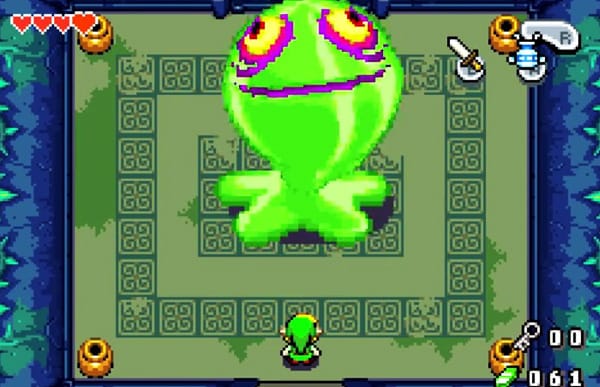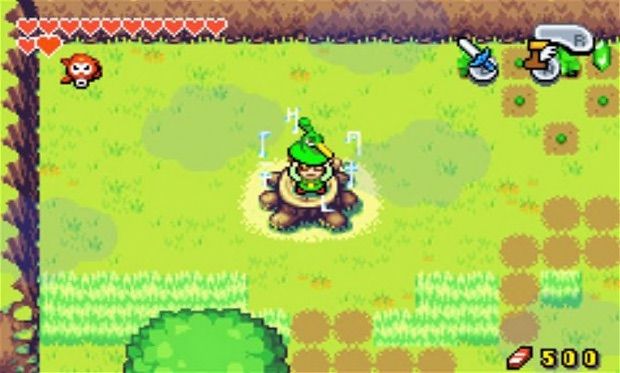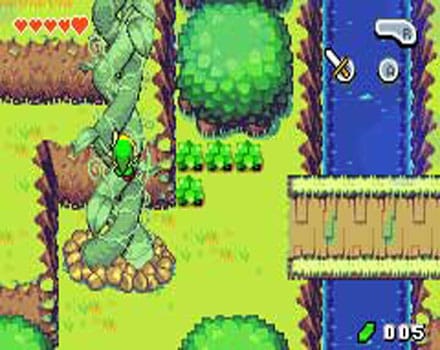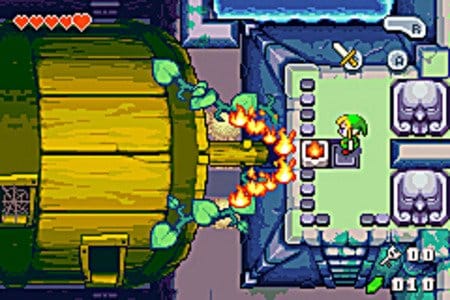The One Zelda Game Nobody Talks About
The Legend of Zelda is one of the most famous and highly regarded franchises in the history of video games, but that doesn’t mean every entry in the series gets its proper due. Sure, everyone knows and lauds masterworks like Ocarina of Time, Wind Waker, and Breath of the Wild, but those are but a few standouts in a franchise defined by a score of entries.
If you ask fans of the series what their favorite title is, you’ll likely hear a dozen different answers, yet one game curiously gets left out of the conversation: The Minish Cap, a 2004 entry on the Game Boy Advance. The Minish Cap is easily the best original game I played on the GBA and one of the defining titles of my middle school years.
How come nobody else feels that way?

The Skinny on The Minish Cap
In The Minish Cap, Link must once again save Princess Zelda and the Kingdom of Hyrule from an evil wizard who seeks to gain ultimate magical power in order to reign over all he sees. In his quest to repair a sacred blade that he can use to defeat this dastardly villain, Link encounters an ancient wizard named Ezlo—who has been transformed into a green hat (!!!)—who plops himself onto Link’s head and gives him the ability to shrink down to the size of a bug. This newfound power allows the hero to communicate with a miniature race of beings scattered throughout the world (known as the Minish) and access tiny locales throughout the game.
The game largely plays like a traditional top-down experience (like in Link’s Awakening or A Link to the Past), but this title puts more of a focus on interacting with the small crevices of the world and meeting some of the more fun and intriguing NPCs of the series. The overworld features numerous houses, caves, and secret areas where the player will either find hordes of monsters or a bubbly, endearing NPC.

In addition, The Minish Cap includes a myriad of extracurricular tasks, many initiated by fusing Kinstones, an action you can perform with many different NPCs that causes very “lucky” things to happen around the world. Some of these “acts of luck” include providing access to new areas, scattering small chests, and even spurring certain side quests. Zelda games typically have plenty of extra content, but The Minish Cap has some of the best.

The Minish Cap Feels Lost
Zelda games rarely get lost in the maelstrom of new releases each generation. Phantom Hourglass might get little fanfare, but damn near everybody with a DS has played it at some point. Skyward Sword wasn’t exactly one of the franchise’s top sellers, but it certainly sparked a lot of conversations about which direction fans wanted to see the series go. What about The Minish Cap, a charming (albeit short and easy) adventure that featured some of the smoothest controls and most likable NPCs in the series?
A number of factors play into how a game like that sinks into oblivion. Most notably, The Minish Cap didn’t sell particularly well. According to VGSales, the game sold about 1.76M copies worldwide, making it the third worst selling main series Zelda game in history, behind only Tri-Force Heroes and Four Swords Adventures. The title’s poor sales performance is especially jarring when you consider A) the immense popularity and cultural relevance of The Legend of Zelda, B) the fact that over 81M people owned a Game Boy Advance, which is the ninth-best selling video game system ever, and C) other Zelda games released exclusively on handheld consoles sold fairly well, from Link’s Awakening all the way to A Link Between Worlds. If people didn’t buy it, why exactly should it still be relevant?
The (relatively) poor fiscal performance of The Minish Cap, however, doesn’t fully tell the whole story. Plenty of cult hits (e.g. Deadly Premonition, Phantom Dust, and No One Lives Forever) didn’t have the flashiest sales numbers, but were beloved enough during their time that they still hang around in certain gaming spheres to this day. Hardly anybody in the gaming press or gaming culture at large ever even mentions The Minish Cap, much less showers it with any praise. Unfortunately for The Minish Cap, low-selling entries in popular series rarely get the cult hit treatment; they often fade into obscurity, discarded as goofy outliers with no place in the franchise’s expanding oeuvre.

Another explanation could be The Minish Cap’s scarcity, as it has received a re-release only on the Wii U’s Virtual Console. Hardly anybody owns a Wii U, and those that do will have to clear the system of several layers of dust before actually playing anything on it. As we’ve seen recently with ports of Mario Kart 8, Donkey Kong Country: Tropical Freeze, and Bayonetta 2 to the Nintendo Switch, the Wii U has officially reached obsoleteness, so even its widely furnished Virtual Console seems more like the “favorites” section of an abandoned library at this point. Unless you were one of the few that owns Nintendo’s disastrous failure of a console or one of the even fewer who owned a hard copy of The Minish Cap on GBA, you have no (legal) way of playing it now.
Poor sales and lack of availability certainly hurt the GBA’s Zelda original’s chance at gaming immortality, but it’s not like people didn’t like it upon release. According to Metacritic, the game has a score of 89 out of 100, suggesting “generally favorable reviews.” For comparison, A Link Between Worlds has a score of 91, Phantom Hourglass scored a 90, and Spirit Tracks, viewed by many as the black sheep of the franchise’s main entries, scored an 87. The Minish Cap accomplished a score comparable to many of the series’ other handheld entries, yet somehow didn’t sell as many copies.
You can look at every angle you like: The Minish Cap apparently just wasn’t powerful enough to be viewed as the gem that it is. The reality is that we’ll never truly know why the game seldom gets mentioned in most gaming (or even Zelda-related) conversations, no matter how much we parse each potential contributing factor.

Closing Thoughts
Somehow, a solid entry in one of the most popular gaming franchises appears to have been scratched from our collective memory, despite receiving stellar reviews and being on one of the most ubiquitous gaming platforms imaginable. The Minish Cap is certainly unique, but it’s not a gimmick like Tri-Force Heroes or a mechanical outlier like Majora’s Mask; it largely plays much like the majority of the series, and even adds some clever ideas and smart world design. Regardless, it remains a gem and a delightful Zelda experience, despite its seemingly limited audience.
I’m not exactly dismayed at the idea of The Minish Cap slipping into irrelevance. New games constantly enter and exit the churn of the release cycle, so it should never really come as surprise that a gem escapes our collective notice and slips into obscurity. Still, the near ubiquitous neglect of The Minish Cap in gaming colloquoy goes to show that even great and seemingly recognizable art can quickly and easily become just another forgettable piece of software. Then again, a solid Switch port or remake could reverse all of this, but it seems unlikely that such a thing would happen, given the lack of appeal.
Sam has been playing video games since his earliest years and has been writing about them since 2016. He’s a big fan of Nintendo games and complaining about The Last of Us Part II. You either agree wholeheartedly with his opinions or despise them. There is no in between. A lifelong New Yorker, Sam views gaming as far more than a silly little pastime, and hopes though critical analysis and in-depth reviews to better understand the medium's artistic merit. Twitter: @sam_martinelli.











1 Comment
THIS IS THE BEST ZELDA GAME EVER AND IT’S SO UNDERRATED